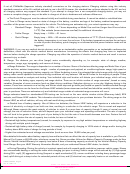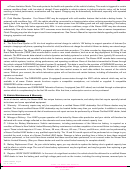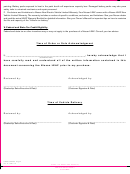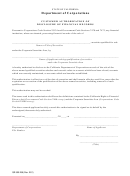Customer Disclosure Form
ADVERTISEMENT
NEW VEHICLE SALES DEPARTMENT
(Review with Nissan LEAF Customer)
Nissan LEAF CUSTOMER DISCLOSURE FORM
For use with Nissan LEAF
IMPORTANT Customer Information
Nissan LEAF
Congratulations on your decision to purchase a new Nissan LEAF and joining others in reducing tailpipe emissions and oil
dependence. The Nissan LEAF has very unique capabilities but also has unique requirements for normal operation that are different
from other vehicles you may have owned or operated in the past. Owning a Nissan LEAF therefore requires additional and special
consideration and understanding regarding the driving and operation characteristics, charging, service and maintenance
requirements. This document and our website will provide valuable information for your consideration.
I. Unique Characteristics Of An All Electric Vehicle. The Nissan LEAF may not meet all of your driving needs, and not all
markets may be ready for the Nissan LEAF. There are elements of ownership to consider both common with internal combustion
engine vehicles and unique to electric vehicles, such as: driving needs – cargo, personnel, commuting distance, availability of
workplace and/or public charging infrastructure, local incentives and permitting policies, and driving style. In many cases it will be
an ideal ‘primary car.’ But some people will continue to need a second, internal combustion engine car for long distance drives, or
will want a second car with more carrying capacity or performance. This form will alert you to several factors to consider. THE
NISSAN LEAF WEBSITE ( ) CONTAINS ESSENTIAL INFORMATION WHEN MAKING A DECISION ON
WHETHER AN ALL ELECTRIC VEHICLE IS RIGHT FOR YOU. Call us if you have any questions (1-877-NO GAS EV, 1-877-664-
2738).
II. Electric Vehicle Operation. Because the Nissan LEAF is an electric vehicle, some of the vehicle’s systems operate differently
and exhibit different characteristics than internal combustion engine vehicles.
Before operating your vehicle or contacting your dealership with concerns regarding your vehicle’s operations,
please carefully read your Owner’s Manual, Nissan LEAF Warranty Information Booklet, and the Service and
Maintenance Guide for necessary additional information concerning the proper operation, operational
characteristics (including charging, time to charge, normal battery capacity loss over time, effects on autonomy
range), service and maintenance requirements and the terms and conditions of the applicable New Vehicle Limited
Warranty.
It is important to conserve power (electricity) and plan your charging needs when you drive. The Nissan LEAF is powered by
electricity and does not require, nor is it capable of using, gasoline like a vehicle powered by a traditional internal combustion engine.
In order for the vehicle to operate, the vehicle battery must be charged with electricity in advance. The battery pack is the sole source
of power to operate the vehicle. The Nissan LEAF will use electricity stored in the vehicle battery as it operates, gradually decreasing
the battery’s state of charge. If the vehicle battery becomes completely discharged, the vehicle will not operate until it is re-charged,
a process which can take anywhere from 30 minutes to 21 hours as described more fully below.
A.
Methods Of Charging The Vehicle (3 types with 240V recommended):
(1) Standard Charge. Nissan highly recommends a home charging station be installed on a dedicated 240V circuit by a
professional electrician using an SAE J1772 compliant charging dock. Nissan has contracted with AeroVironment to assist you in
purchasing and installing a charging dock.
(2) Trickle Charge. Although not recommended for regular use, a dedicated 120V outlet may be used with the supplied charging
cord or an SAE J1772 complaint cord. Charging by this method will take much longer than 240V charging. Warning: to protect
against electrical hazard, serious personal injury or death: (1) Do not plug in the charging cord until it is inspected by a licensed
electrician to confirm that the electrical circuit can accept a continuous 12 amp draw and (2) Do not use this charging cord in
structures more than 40 years old, or structures using fuse-based circuit protection, and use only with an electrical circuit protected
by a dedicated circuit breaker. See your owner’s manual for additional warnings.
(3) Quick Charge. Nissan is encouraging the development of public charging infrastructure and compatibility between public
charging stations and vehicle charging ports but we cannot ensure this will occur. DC Fast Charge or Quick Charge is being
developed by others commercially and if available, will provide up to a 50kW DC charge. Nissan cannot assure you that public
charging stations will be available in locations where you operate the vehicle, nor can Nissan predict the period of time it may take
for public charging infrastructure to be developed. A Nissan LEAF equipped with a Quick Charge port will be compatible with most,
CD3E NZE0U0 Page 1
Ver. 3: 12/21/12
(Parts 1+2 Sheet Title Position)
VEHICLE SALES JACKET
CUSTOMER
ADVERTISEMENT
0 votes
Related Articles
Related forms
Related Categories
Parent category: Legal
 1
1 2
2 3
3 4
4








